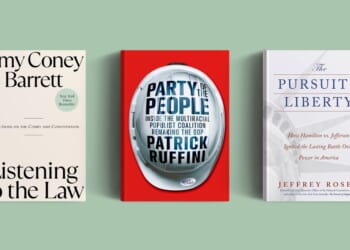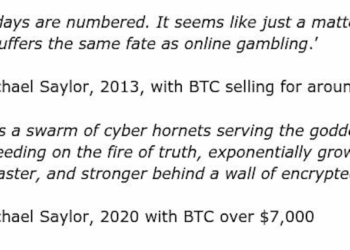By Nick Griffin
Is Artificial Intelligence (AI) a boon that will shortly usher in an “Age of Abundance” for all humanity, or is it a curse that will wipe us all out? Readers will have their own views, probably with the majority leaning toward the pessimistic view, particularly given the anti-human track record of the technocratic elite that is pushing it so hard.
Click the Link Below to Listen to the Audio of this Article
But there is a third possibility: That AI is simply the latest in a series of drastically over-hyped investment bubbles, a grotesque example of how groupthink and greed can make people lose all contact with reality.
The latest boasts from OpenAI’s Sam Altman certainly point that way. The giant company’s CEO has just announced plans to relax restrictions on ChatGPT, permitting verified adult users to turn photographs into five-second custom pornography clips.
On Oct. 14, Altman announced that his company plans to significantly loosen content restrictions on ChatGPT paving the way for verified adult users to generate what he euphemistically calls “erotica.” Framed as treating adults like adults, this is in fact a dangerous erosion of moral boundaries in the name of technological freedom.
Vast sums are flooding into AI, with U.S. venture capital directing nearly two-thirds of deals toward AI and machine learning, totalling around $200 billion this year alone, while Microsoft and Google plan nearly $400 billion in capital investments next year.
OpenAI is committing $300 billion over five years to computing power, with Oracle (averaging $60 billion annually) seeking at least $1 trillion overall for infrastructure. Its expected revenue this year, however, hovers at a mere $13 billion. This highlights a disconnect between hype and reality that screams “speculation.”
In the United States, AI startups captured a record 46.4% of the $209 billion in total capital raised last year, with two-thirds of venture deals now involving AI or machine learning. This is diverting cash flows from traditional sectors into what many experts warn is a trillion-dollar bubble built on unprofitable startups and a welter of extravagant promises.
“Experts” say AI will give us nuclear fusion, cure cancer and end poverty. Some of the promises are very modern, but the story here predates the creation of the United States. At the height of England’s disastrous South Sea Bubble frenzy in 1720, one of the ventures floated in the frenzy of speculation was “a company for carrying out an undertaking of great advantage, but nobody to know what it is.”
If you want a parallel from our own times, this speculative frenzy, driven by hype rather than proven profits, mirrors the dot-com era, where overvalued tech stocks crashed, wiping out wealth and stalling growth.
The dot-com bubble of the late 1990s saw internet hype drive valuations sky-high—think Pets.com raising $80 million in an initial public offering only to collapse in bankruptcy nine months later.
AI “investments” echo that era, with price-to-earnings ratios for tech giants like Nvidia at 55 times earnings, nearly double what they were a decade ago, and AI’s share of the economy a third larger than internet investments during the dot-com peak.
The AI bubble already has plenty of warning signs: Vast sums are being ‘invested’ in funding loops, in which AI companies are buying stakes in other AI companies, relying on the inflated value of their acquisitions to obscure the fact that their actual operations are making far less than they need to cover their debts—if they are making money at all.
The AI sector is propping up the U.S. economy, with 80% of stock market gains in 2025 attributable to AI shares. Outside the tech sector, GDP growth from the rest of the economy was a measly 0.1 percent in the first half of 2025. One analysis recently calculated the AI boom to be 17 times bigger than the dot-com bubble and 4 times the housing bubble in 2008.
When the AI bubble bursts—and it is bound to—it will trigger a global financial crisis that will devastate jobs and security. Given that 67% of Americans already live paycheck-to-paycheck and can’t afford to go to the doctor, a further deterioration would be an economic, health and social catastrophe.
Even if the AI bubble bursts, and even if AI is a force so powerful and real that it avoids the fate of other speculative bubbles, a whole new raft of gigantic problems arises.
AI’s massive energy and water demands are straining U.S. resources, threatening increased costs for households and hindering traditional industries.
AI data centers were already consuming 4.4% of U.S. electricity back in 2023, a figure that could triple by 2028, with projections showing data centers driving nearly half of electricity demand growth by 2030. This would surpass even the power needs of energy-intensive manufacturing like steel and cement.
A single typical AI data center guzzles as much electricity as 100,000 households, while the largest under development could consume 20 times that, straining grids in regions like Northern Virginia, Texas, and the Midwest. The growing technology is set to add $4.3 billion in added costs this year alone for transmission upgrades that will raise bills for hardworking families and small businesses.
Water demand is equally alarming, with AI data centers emerging as one of the top 10 water-consuming industries in the United States, drawing billions of gallons annually for cooling servers, often in drought-prone areas where two-thirds of new facilities since 2022 are located. This competition pits Big Tech against American farmers and manufacturers, who rely on affordable water to sustain jobs and output.
The impact of AI on jobs is also a major cause for concern. AI is slated to eliminate half of entry-level white-collar positions, spiking unemployment to 10-20% in the coming years.
If the AI bubble is exemplified by the “investment” of millions of dollars to allow people to turn photographs into pornography, it is perhaps a very apt way of looking at what the whole ‘industry’ means for Americans.
Nick Griffin is a British nationalist commentator and writer. He was chairman of the British National Party (BNP) from 1999 to 2014, and a Member of the European Parliament for North West England from 2009 to 2014. Since then, Griffin has remained active in British politics despite being vilified for criticizing rampant immigration. You can read his work on Substack at “Nick Griffin Beyond the Pale” and on Telegram t.me/NickGriffin.
(function() {
var zergnet = document.createElement(‘script’);
zergnet.type=”text/javascript”; zergnet.async = true;
zergnet.src = (document.location.protocol == “https:” ? “https:” : “http:”) + ‘//www.zergnet.com/zerg.js?id=88892’;
var znscr = document.getElementsByTagName(‘script’)[0];
znscr.parentNode.insertBefore(zergnet, znscr);
})();

























